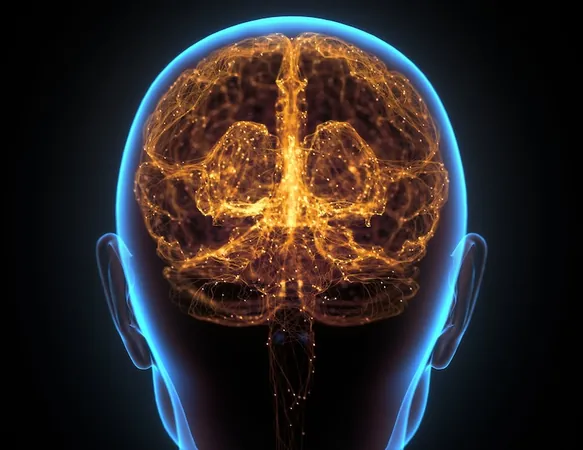
Shocking New Study Reveals Thrombectomy Offers No Advantage for Large Stroke Patients!
2024-10-31
Author: Arjun
Recent findings from a groundbreaking clinical trial published in JAMA
have thrown a major curveball into the commonly held belief about thrombectomy as a treatment for large strokes. The Thrombectomy for Emergent Salvage of Large Anterior Circulation Ischemic Stroke (TESLA) trial showed that patients with large core strokes undergoing endovascular thrombectomy did not experience significantly better outcomes after 90 days compared to those receiving standard stroke care.
Expert Insights from Dr. Sameer A. Ansari
A prominent figure in the neurology field, Dr. Sameer A. Ansari, emphasized the unexpected nature of these results. The study involved 300 patients who presented within 24 hours with large core infarcts, which are strokes that lead to serious, irreversible brain damage. Patients were randomly assigned to receive either the minimally invasive thrombectomy procedure — which aims to remove blood clots and restore blood flow to the brain — or standard stroke management practices.
Challenging Previous Beliefs
Historically, prior studies had shown significant benefits of thrombectomy, but those earlier trials often involved patients selected for their likely favorable outcomes. Dr. Ansari highlighted that the TESLA trial’s findings are critical as they challenge the idea that larger strokes could still benefit from thrombectomy, raising concerns about over-selection of candidates in earlier research.
Comparison of Results
After extensive follow-up, the results were stark. The mortality rates after 90 days were almost identical: 35.3% for patients who underwent thrombectomy and 33.3% for those in the control group. Moreover, incidents of symptomatic intracranial hemorrhage within 24 hours were observed in 4% of the thrombectomy group compared to just 1.3% in the standard care group.
Future Implications
What does this mean for future interventions for stroke patients? Dr. Ansari points out that while the TESLA trial did not yield the expected benefits for large core strokes, it can pave the way for establishing more standardized guidelines for stroke treatments. Most importantly, it suggests that there exists a threshold of stroke burden beyond which thrombectomy may not yield positive outcomes.
Refining Selection Criteria
Looking ahead, the healthcare community aims to refine the criteria for CT imaging used to select patients for thrombectomy. The goal is to better identify those likely to benefit from the procedure while excluding those for whom it provides no advantage. Dr. Ansari also mentioned that ongoing studies are exploring the efficacy of thrombectomy for patients with smaller vessel blockages or those who present later but may still have salvageable brain tissue.
The Future of Stroke Treatments
As the healthcare landscape constantly evolves, these findings will undoubtedly stir further debate and research into optimal treatment pathways for stroke patients. Keep an eye out for developments that could reshape how we approach brain health in the face of stroke — the implications are significant and could affect millions.




 Brasil (PT)
Brasil (PT)
 Canada (EN)
Canada (EN)
 Chile (ES)
Chile (ES)
 España (ES)
España (ES)
 France (FR)
France (FR)
 Hong Kong (EN)
Hong Kong (EN)
 Italia (IT)
Italia (IT)
 日本 (JA)
日本 (JA)
 Magyarország (HU)
Magyarország (HU)
 Norge (NO)
Norge (NO)
 Polska (PL)
Polska (PL)
 Schweiz (DE)
Schweiz (DE)
 Singapore (EN)
Singapore (EN)
 Sverige (SV)
Sverige (SV)
 Suomi (FI)
Suomi (FI)
 Türkiye (TR)
Türkiye (TR)